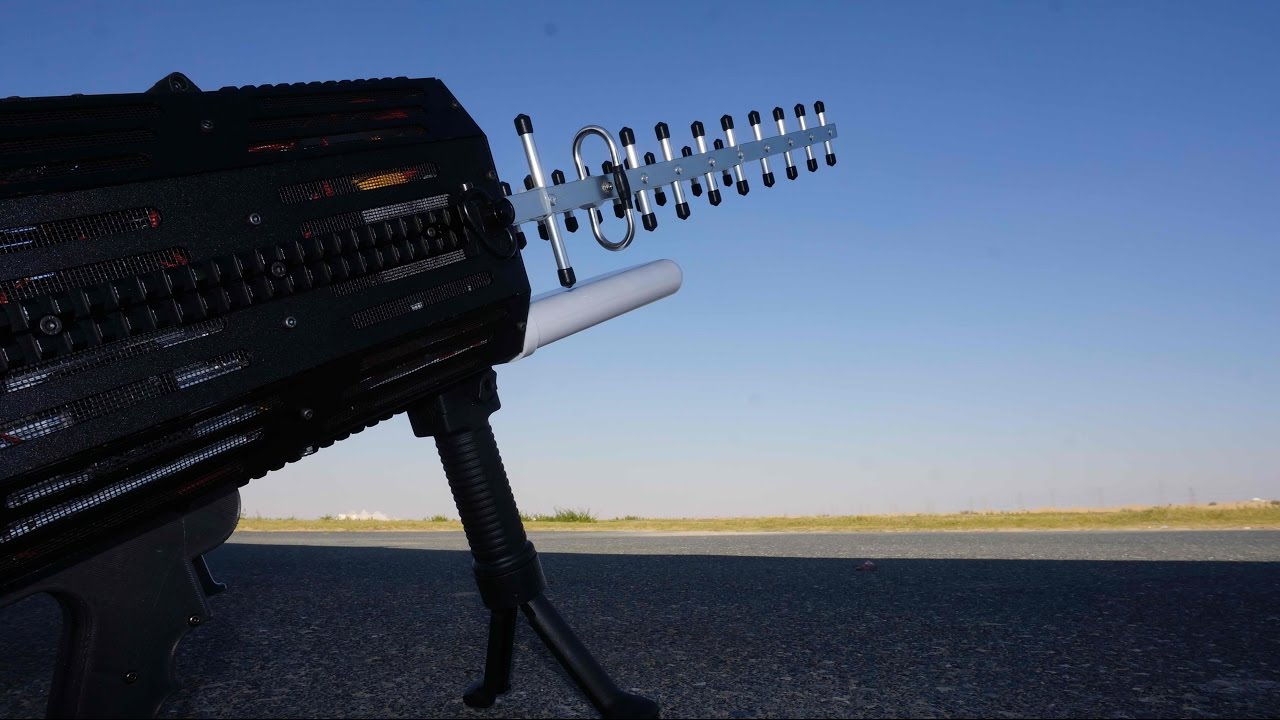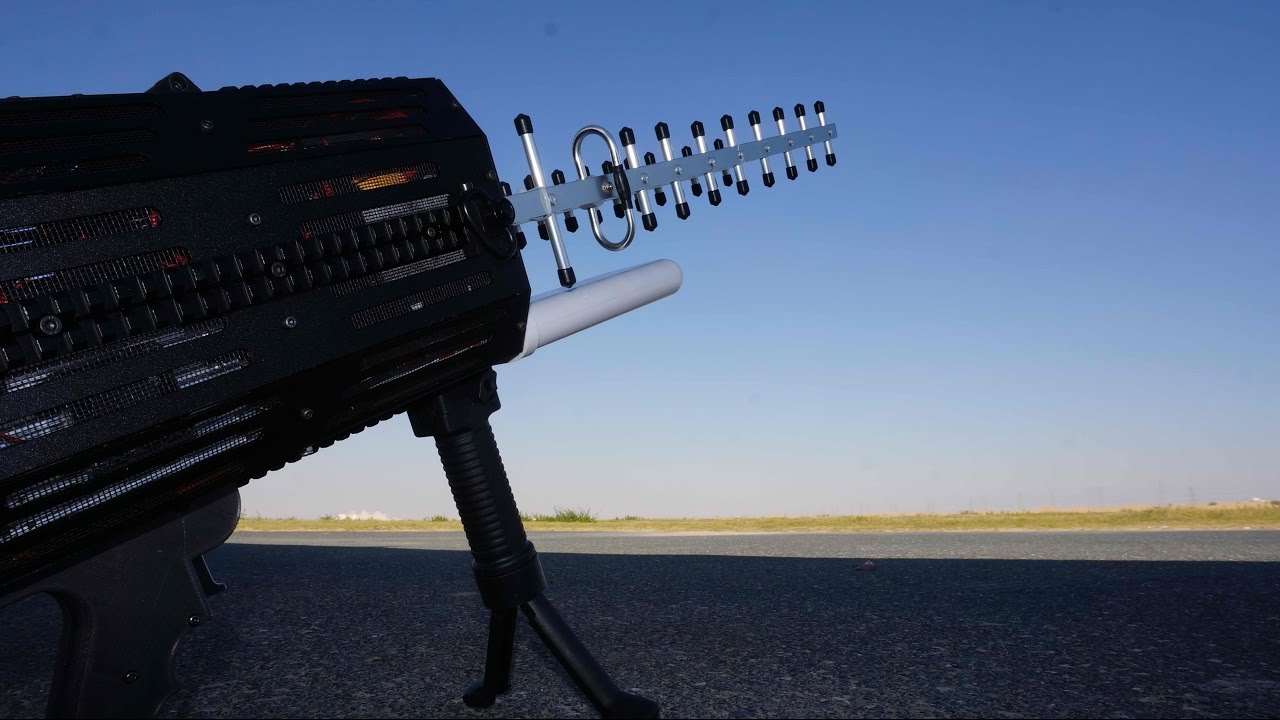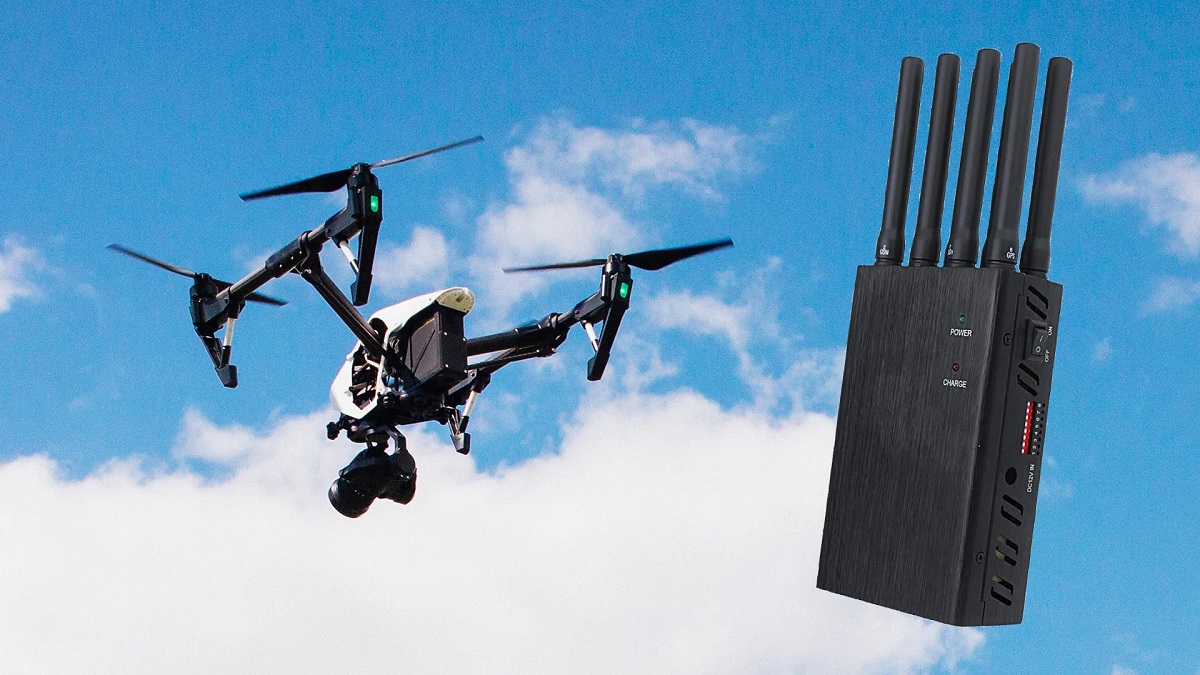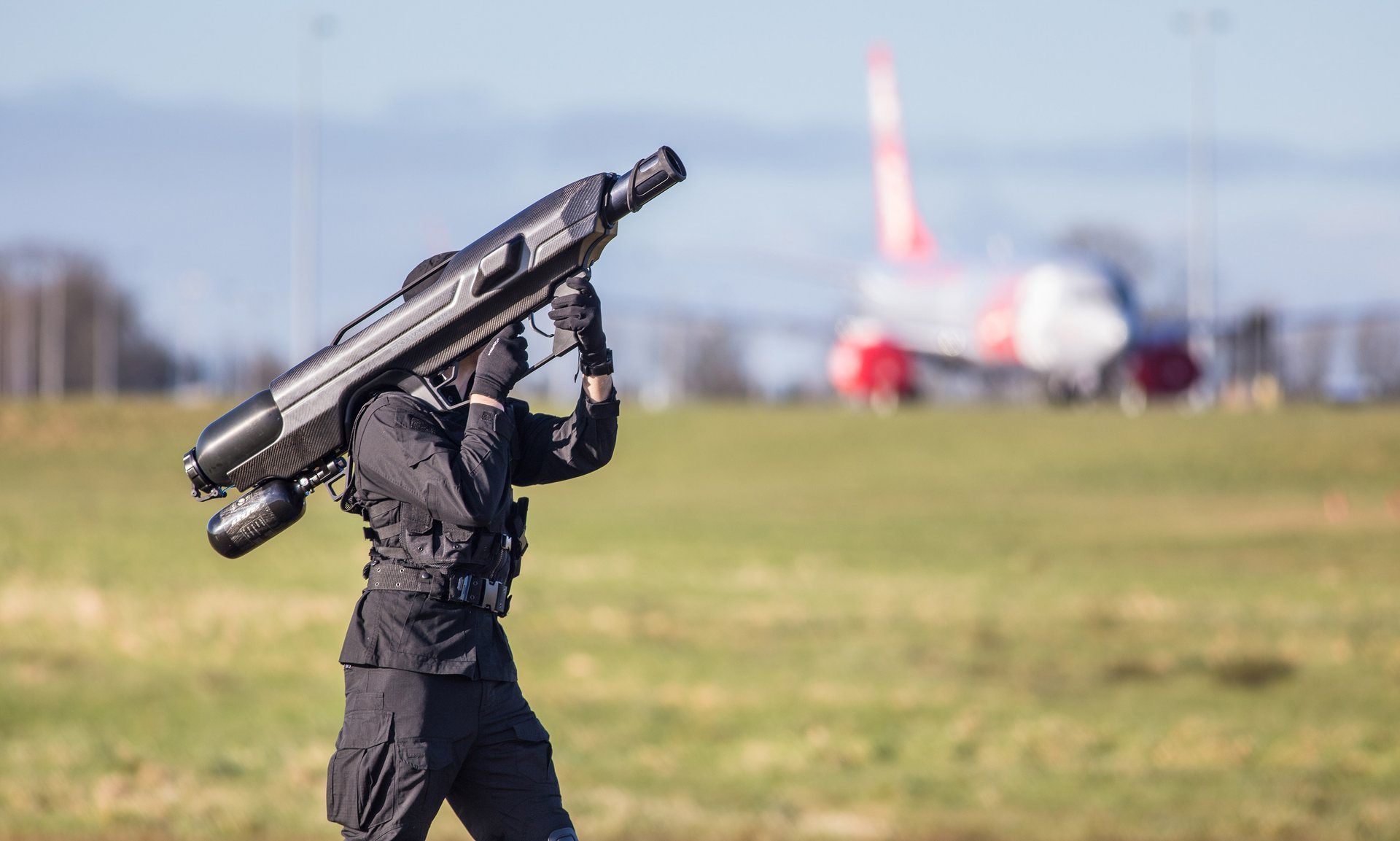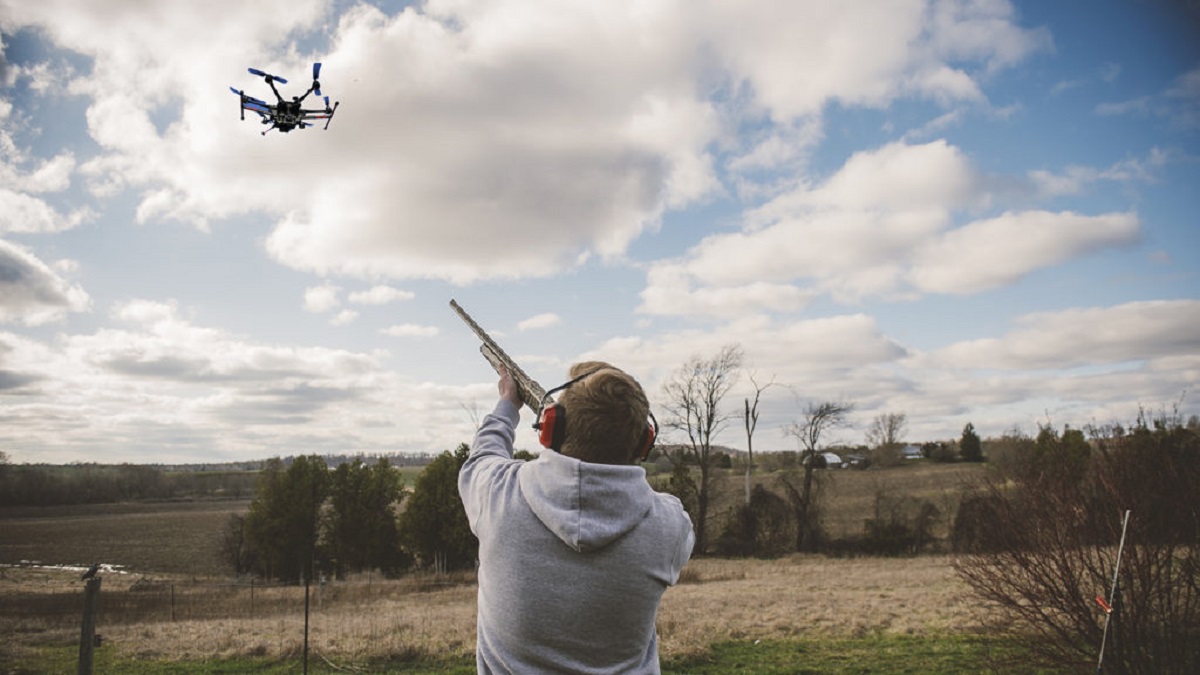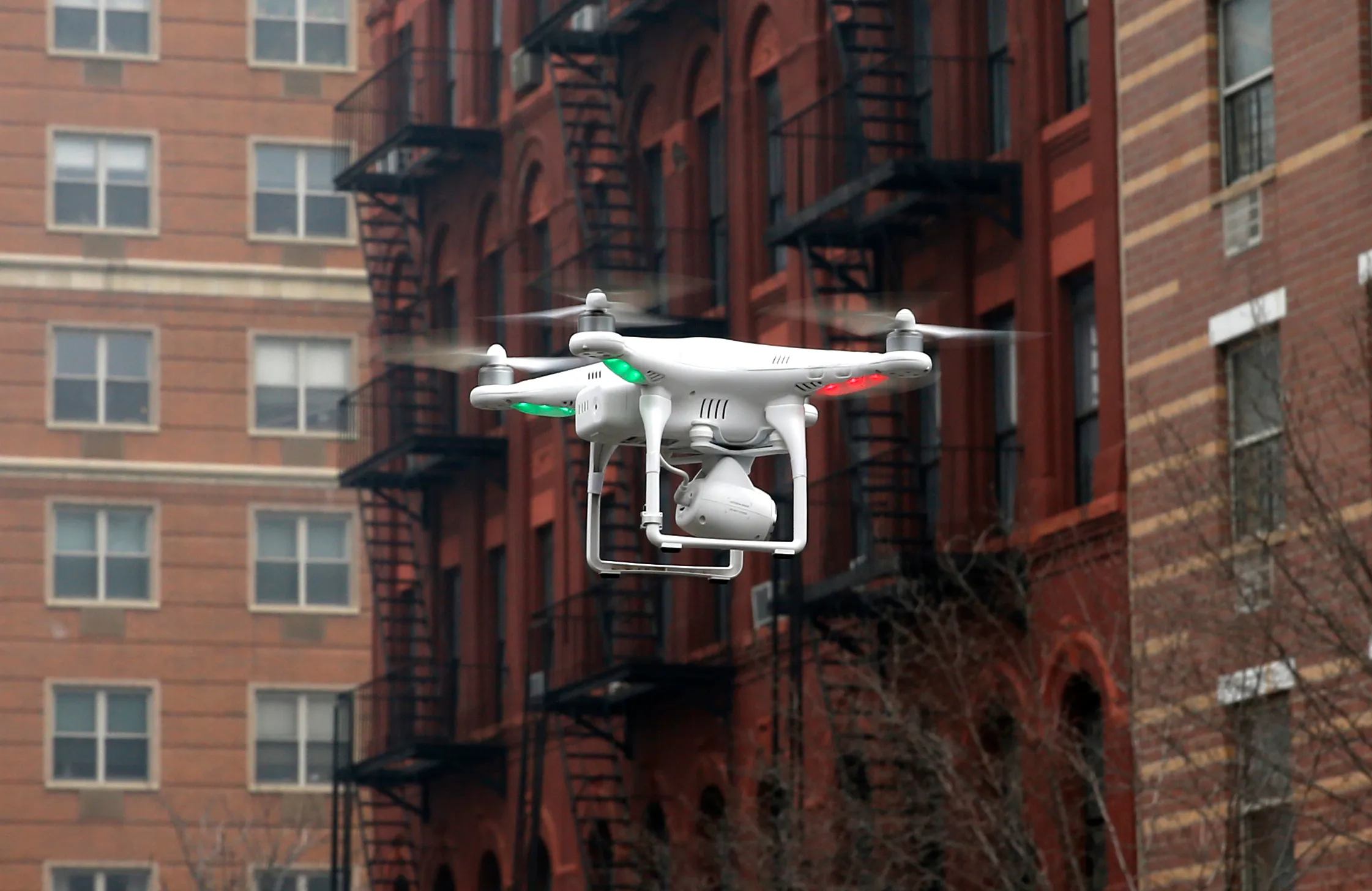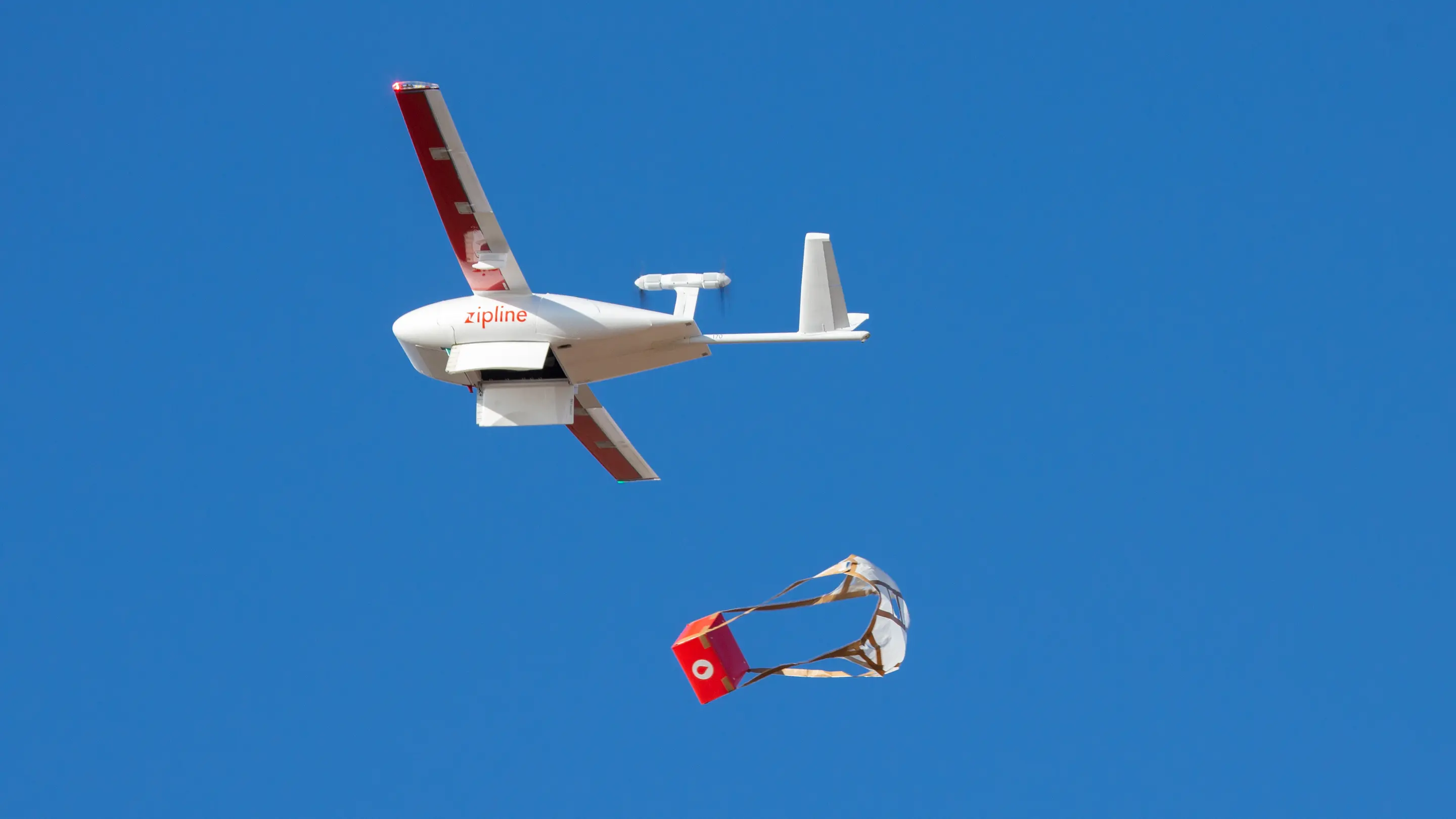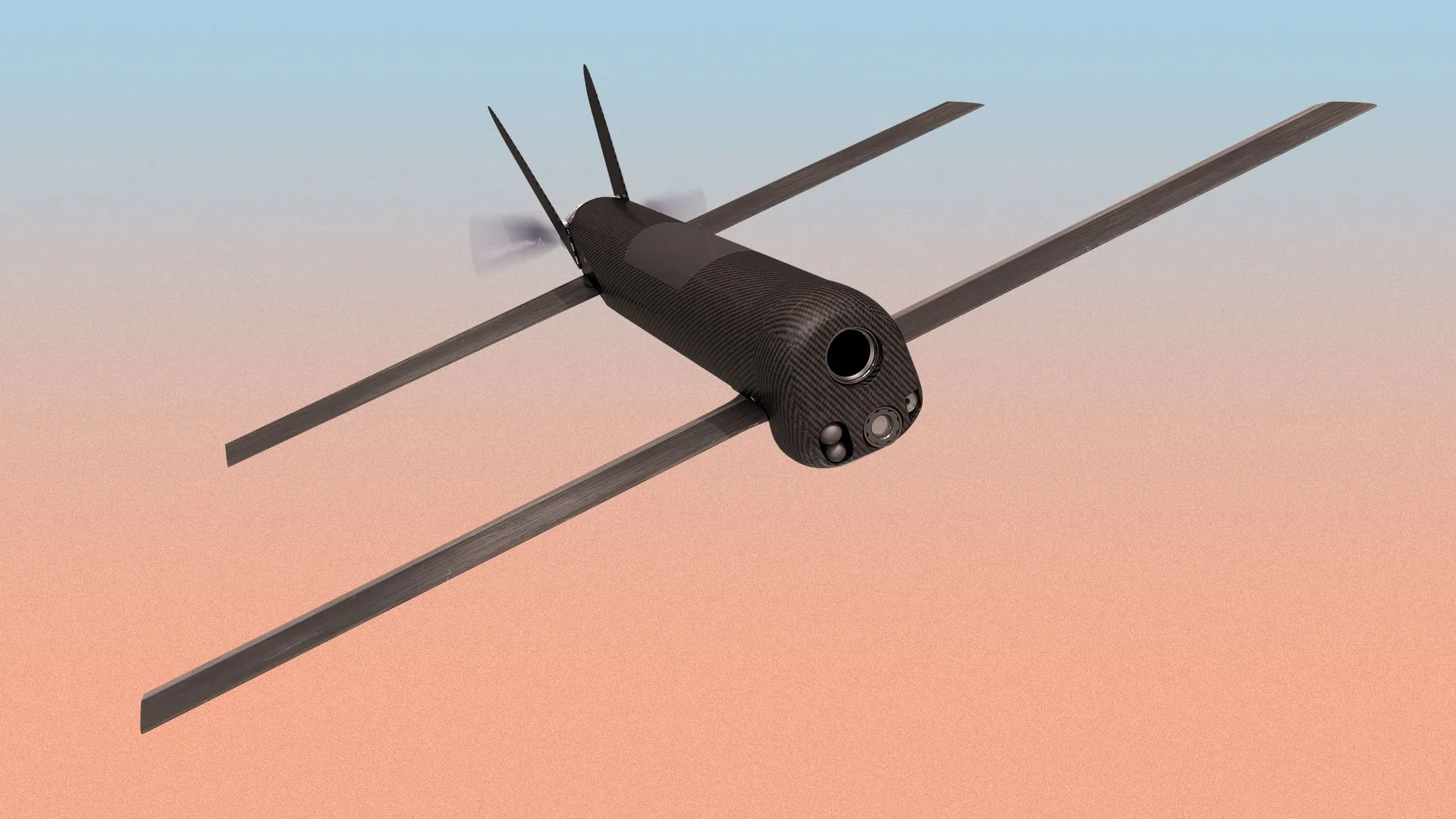Introduction
Drones have become increasingly popular in recent years, with both recreational and commercial use on the rise. Their ability to fly in various environments and capture stunning aerial footage has opened up new horizons for photography, filmmaking, and even delivery services. However, along with their benefits, drones also pose potential risks and challenges.
One of the major concerns associated with drones is their ability to trespass on private property or violate no-fly zones. This has led to the development of technologies aimed at jamming drone signals, effectively preventing them from flying in restricted areas.
Jamming drone signals involves interfering with the communication between the drone and its remote controller, rendering it unable to receive commands or transmit data. While this technique has seen significant advancements, it is important to understand the legal and ethical considerations surrounding its use.
In this article, we will delve into the world of drone jamming, exploring the reasons why it may be necessary, the different types of jamming devices available, and the potential risks and limitations associated with their use. Additionally, we will discuss some effective jamming techniques and offer guidance on what to do if you encounter a drone in a no-fly zone.
Understanding the complexities of drone signals and the techniques used to disrupt them requires a basic understanding of how drones operate. Armed with this knowledge, we can explore the various options available for preventing unwanted drone activities and ensure the safety and privacy of our airspace.
Understanding Drone Signals
To effectively jam drone signals, it is crucial to have a solid understanding of how these signals work. Drones communicate with their remote controllers through various wireless technologies, most commonly radio frequency (RF) signals. These signals transmit commands from the controller to the drone, as well as receive data from the drone’s onboard sensors or cameras.
Drone signals operate on specific frequency bands, typically within the 2.4 GHz and 5.8 GHz ranges. These frequencies are commonly used for other wireless devices as well, such as Wi-Fi networks and Bluetooth devices. As a result, jamming a drone signal requires precise targeting to avoid disrupting legitimate wireless communication.
Drone signals can be categorized into two main types: command and control signals and video transmission signals. Command and control signals are crucial for controlling the drone’s movements, sending commands for takeoff, landing, and maneuvering. Video transmission signals, on the other hand, are responsible for relaying the live video feeds from the drone’s onboard camera to the remote controller or any connected devices.
To effectively disrupt a drone’s operations, both the command and control signals and video transmission signals need to be jammed. By targeting and interfering with these signals, the drone becomes unable to receive commands from the controller and transmit video data, rendering it effectively grounded.
It is important to note that some advanced drones employ encryption to protect their signal transmissions. This can pose a challenge when attempting to jam their signals, as encryption makes it difficult to decode and interfere with the communication. However, some more sophisticated drone jammers have the capability to bypass or override encryption protocols, enabling effective signal disruption.
Understanding the inner workings of drone signals allows for more targeted and efficient jamming techniques. By focusing on the specific frequencies used by drones and effectively disrupting their command and control, as well as video transmission signals, we can effectively neutralize the threat they may pose in restricted areas or private spaces.
Why Jamming Drone Signals?
Jamming drone signals may seem like an extreme measure, but there are valid reasons why it is necessary in certain situations. Here are several key reasons why jamming drone signals is important:
1. Protecting Privacy: Drones equipped with cameras have the potential to invade privacy by capturing images or videos without consent. Jamming signals in sensitive areas or private property prevents unauthorized surveillance and helps maintain privacy rights.
2. Preventing Unauthorized Access: No-fly zones exist for a reason, such as protecting airports, government buildings, and critical infrastructure. By jamming drone signals, we can prevent drones from flying in restricted airspace, limiting the risk of accidents, security breaches, or interference with important operations.
3. Ensuring Safety: In crowded public spaces or events, the presence of drones poses safety concerns. In an effort to prevent accidents or collisions, jamming signals can effectively prohibit drones from flying in areas where they can potentially endanger individuals or create hazardous situations.
4. Sensitive Information Protection: Drones equipped with data collection sensors can be used for industrial espionage, unauthorized surveillance, or gathering sensitive information. By jamming signals, we can protect valuable data from being accessed or transmitted illicitly.
5. Counteracting Illicit Activities: Unfortunately, drones have been used for illicit activities such as smuggling contraband into prisons, carrying out unauthorized surveillance, or disrupting public events. By jamming drone signals, we can counteract these activities and maintain law and order.
While the reasons for jamming drone signals may be valid, it is crucial to adhere to legal and ethical considerations when doing so. The use of drone jammers should comply with local regulations and guidelines, ensuring that it is carried out in a responsible manner.
It is important to note that jamming drone signals should be done with proper authorization and within the bounds of the law. Unauthorized use of drone jammers can have legal ramifications and may interfere with legitimate drone operations or disrupt essential communication systems.
Understanding the reasons behind jamming drone signals helps us recognize the importance of implementing effective countermeasures to protect privacy, ensure safety, and prevent unauthorized activities. By deploying responsible and legal jamming techniques, we can mitigate the potential risks associated with drone misuse and maintain the integrity of our airspace.
Legal and Ethical Considerations
When it comes to jamming drone signals, legal and ethical considerations play a fundamental role in determining the appropriate use and potential consequences. While there are legitimate reasons for jamming drone signals, it’s crucial to ensure that these actions are in compliance with local laws and regulations. Here are some key points to consider:
1. Local Regulations: Different countries and regions have specific laws regarding the use of drone jammers. It is essential to familiarize yourself with the laws in your area to understand the legality and limitations of jamming drone signals. Violating these regulations can result in severe penalties and legal consequences.
2. Spectrum Interference: Jamming drone signals involves interfering with signals operating within specific frequency bands. It’s essential to ensure that the jamming activities do not disrupt other legitimate communication systems or cause harm to public safety. Interfering with essential communication, such as emergency services or aviation frequencies, can have severe consequences and may be illegal.
3. Authorization and Permissions: In most cases, the use of drone jammers requires proper authorization and permissions. This typically applies to authorized personnel or entities, such as law enforcement agencies, designated security personnel, or other authorized organizations. Unauthorized use of drone jammers can lead to legal repercussions and may compromise the safety of others.
4. Potential Collateral Damage: Jamming drone signals can inadvertently disrupt other wireless devices operating on similar frequencies. It’s essential to minimize any potential collateral damage and avoid causing interference to legitimate devices or networks. Careful planning and precise targeting can help minimize any unintended disruptions.
5. Ethical Considerations: Using drone jammers should also take into account ethical considerations. It’s important to balance the need for privacy, safety, and security while respecting the rights of others. Transparent and responsible usage of drone jamming devices can help ensure that ethical standards are upheld.
In summary, legal compliance and ethical responsibility are paramount when considering the use of drone jammers. Understanding and adhering to local regulations, obtaining appropriate authorizations, and minimizing any potential interference to legitimate systems are all vital steps to ensure the responsible and ethical use of drone jamming technologies.
By ensuring that the use of drone jammers aligns with legal requirements and ethical principles, we can strike a balance between protecting privacy, safeguarding public safety, and respecting the rights of others in an increasingly drone-populated world.
Different Types of Drone Jamming Devices
As the demand for drone jamming increases, various types of jamming devices have been developed to counteract the threat posed by unauthorized drone activities. These devices employ different techniques to disrupt drone signals and disable their operations. Here are some of the most common types of drone jamming devices:
1. Radio Frequency (RF) Jammers: RF jammers are the most commonly used type of drone jamming devices. They operate by emitting powerful signals within the same frequency range as the drone’s communication signals, effectively overpowering or interfering with the drone’s ability to receive commands or transmit data. RF jammers can be handheld or deployed as stationary units for larger coverage areas.
2. GPS Jamming Devices: GPS plays a crucial role in the navigation and control systems of drones. GPS jammers specifically target the GPS signals used by drones for positioning and navigation. By disrupting the GPS signal, these jammers can cause the drone to lose its ability to maintain stable flight or accurately determine its location.
3. Wi-Fi and Bluetooth Jammers: Drones often use Wi-Fi or Bluetooth technology for communication between the drone and its controller or connected devices. Wi-Fi and Bluetooth jammers interfere with these signals, preventing the drone from receiving commands or transmitting data wirelessly. This type of jammer can be effective against drones with limited communication capabilities.
4. Drone Detection and Jamming Systems: These advanced systems combine drone detection capabilities with jamming technology. They use various detection methods, such as radar, radio frequency analysis, or visual tracking, to identify the presence of drones in the vicinity. Once a drone is detected, the system activates its jamming capabilities to disrupt the signal and neutralize the threat.
5. Drone Gun: Also known as a drone rifle or drone disruptor, a drone gun is a handheld device that emits a focused radio frequency signal to jam the drone’s control and navigation system. The drone gun allows the operator to physically aim and target the drone, weakening or disabling its communication and control functions.
Each type of drone jamming device has its advantages and limitations, and their effectiveness may vary based on the specific circumstances and capabilities of the targeted drone. It is essential to assess the situation and select the appropriate jamming device to effectively address the threat posed by unauthorized drones.
Furthermore, it is worth noting that the use of some advanced drone jamming technologies may require specialized training and proper authorization to ensure responsible and legal usage. Adhering to local regulations and guidelines is crucial for the safe and effective deployment of drone jamming devices.
By staying informed about the different types of drone jamming devices available, individuals and organizations can make informed decisions regarding the optimal solution to counter unauthorized drone activities and protect their privacy, safety, and security.
How Drone Jamming Devices Work
Drone jamming devices employ various techniques to disrupt the signals and operations of unmanned aerial vehicles. These devices target the communication systems of drones in order to interfere with the commands from the remote controller and the transmission of data or video feeds. Here’s how drone jamming devices work:
1. Signal Detection: Drone jamming devices first detect the presence of a drone in the vicinity. This can be done through different methods such as radio frequency analysis, radar systems, or visual detection. Once the drone is detected, the jamming device prepares to disrupt its signals.
2. Signal Interference: Drone jamming devices emit powerful signals on the same frequencies used by drones, causing interference with their communication systems. By transmitting signals with higher power or in a disruptive manner, the jammer can overpower the drone’s commands and prevent it from functioning properly.
3. Frequency Hopping: Some advanced drones employ frequency hopping techniques to avoid signal interference. These drones constantly change their operating frequencies, making it more challenging to jam their signals. However, sophisticated drone jammers are designed to adapt and identify the hopping patterns, allowing them to follow and disrupt the drone’s signals effectively.
4. Encryption Bypass: To enhance communication security, some drones may encrypt their signals. Drone jammers with advanced capabilities can bypass or override encryption protocols, enabling them to disrupt even encrypted drone signals effectively.
5. Range and Power: The effectiveness of a drone jammer depends on its range and power output. A jamming device with a broader range can cover a larger area and effectively neutralize multiple drones simultaneously. Higher power output ensures that the jammer’s signals overpower the drone’s communication signals, rendering them ineffective.
6. Selective Jamming: In certain situations, it may be necessary to jam only specific bands or frequencies utilized by the drone, while allowing other legitimate wireless communication to continue undisturbed. Selective jamming devices can target specific frequencies, minimizing interference with other essential systems or services.
It is essential to mention that the use of drone jamming devices should be undertaken with caution and in compliance with local regulations. Unauthorized and irresponsible use of these devices can lead to legal consequences and interfere with legitimate systems or communication networks.
Additionally, it’s worth noting that the effectiveness of drone jamming devices can vary depending on the sophistication of the targeted drone’s communication systems and the countermeasures it employs. As technology advances, drones may become more resilient to jamming techniques, necessitating further development and refinement of jamming technologies.
By understanding how drone jamming devices work, individuals and organizations can make informed decisions about their use and determine the most appropriate solution to counter unauthorized drone activities effectively.
Factors to Consider when Choosing a Drone Jammer
Choosing the right drone jamming device requires careful consideration of various factors to ensure its effectiveness and compatibility with your specific requirements. Here are some key factors to consider when selecting a drone jammer:
1. Frequency Range: Drones operate on specific frequency bands, typically within the 2.4 GHz and 5.8 GHz ranges. It is important to choose a drone jammer that covers the frequencies used by the drones you aim to disrupt. A wider frequency range capability allows for broader coverage and the ability to counter a wider range of drones.
2. Power Output: The power output of the drone jammer determines its ability to overpower the drone’s signals effectively. Higher power output ensures stronger signal interference, rendering the drone unable to receive commands or transmit data. Consider the distance from which you need to disable drones and choose a jammer with adequate power.
3. Range: The effective range of the drone jammer is another critical factor to consider. Depending on your specific needs, whether it’s securing a small area or a larger perimeter, choose a jammer that can cover the desired range effectively. Bear in mind that larger ranges may require more powerful and advanced jamming devices.
4. Portability and Deployment: Consider the portability and ease of deployment of the drone jammer. Depending on your usage scenario, a compact and handheld jamming device may be sufficient, while larger stationary units may be more suitable for securing larger areas. Portable jamming devices allow for flexibility in deployment and can be used in various locations.
5. Battery Life: Look for a drone jammer with a decent battery life, especially if extended operation is required. Long battery life ensures that the jamming device remains operational for an extended period, providing continuous protection against unauthorized drones.
6. Scalability and Compatibility: If you anticipate the need for expanding your drone jamming capabilities in the future or integrating with other security systems, consider the scalability and compatibility of the jamming device. Ensure that it can be seamlessly integrated into existing security networks or expanded to cover larger areas if needed.
7. Legal Compliance: It is crucial to ensure that the drone jammer you choose complies with local regulations and guidelines. Research and understand the laws and restrictions in your area regarding the use of jamming devices to avoid any legal ramifications or interference with legitimate systems.
8. Effect on Legitimate Signals: Consider the potential impact of the drone jammer on nearby legitimate wireless communication systems. Choose a jammer that minimizes interference with essential services or wireless devices to maintain uninterrupted communication for other authorized users.
By carefully considering these factors when choosing a drone jammer, you can select a device that aligns with your specific needs, ensuring effective and responsible countermeasures against unauthorized drone activities.
Potential Risks and Limitations of Drone Jamming
While drone jamming can be an effective countermeasure against unauthorized drone activities, it is essential to be aware of the potential risks and limitations associated with this technique. Understanding these risks allows for responsible and effective use of drone jamming devices. Here are some key considerations:
1. Legal and Regulatory Challenges: The use of drone jamming devices may be subject to specific laws and regulations in your area. It is crucial to understand and comply with these regulations to avoid legal consequences. Unauthorized or improper use of drone jammers can result in fines, penalties, or criminal charges.
2. Collateral Interference: Drone jamming devices emit signals that can potentially interfere with other legitimate wireless communication systems operating in the same frequency range. Careful consideration and expert configuration are necessary to minimize any unintended impact, especially on critical services such as aviation frequencies or emergency communication systems.
3. Advanced Drone Countermeasures: As drone technology evolves, so do countermeasures employed by drones to resist jamming. Some drones may utilize frequency hopping techniques, encryption, or other advanced technologies to evade signal disruption. This can limit the effectiveness of traditional jamming devices and require more advanced, specialized jammers.
4. Potential for Escalation: Disrupting drone signals can escalate the situation, especially if the drone operator is intent on causing harm or violating laws. In some cases, attempting to jam a drone’s signal may lead to the drone operator reacting unpredictably or initiating aggressive behavior. Operators should exercise caution and prioritize personal safety when engaging with potentially hostile drone operators.
5. False Sense of Security: Relying solely on drone jamming may create a false sense of security. It is important to supplement jamming techniques with other security measures, such as physical barriers, surveillance systems, and drone detection technologies. Comprehensive security strategies provide a more robust defense against unauthorized drone activities.
6. Impact on Authorized Drone Operations: Care must be taken to prevent interference with authorized drone operations, such as those conducted by law enforcement agencies, emergency services, or other legitimate entities. Accidental disruption of authorized drone missions can have serious consequences, including impeding critical operations or compromising public safety.
7. Technological Advancements: As drone technology evolves, so will the countermeasures and anti-jamming capabilities employed by drones. Drone manufacturers may develop measures to combat jamming devices, making it more challenging to effectively disrupt drone signals. Continuous research and development are necessary to keep pace with these advancements and adapt jamming techniques accordingly.
By understanding and addressing these potential risks and limitations, individuals and organizations can make informed decisions about the use of drone jamming devices. Proactive measures, strict adherence to legal requirements, and ongoing research into evolving countermeasures are essential to ensure the responsible and effective use of drone jamming technologies.
Jamming Techniques and Strategies
Effective use of drone jamming devices requires understanding various techniques and strategies to disrupt drone signals successfully. Here are some common jamming techniques employed to neutralize unauthorized drone activities:
1. Blanket Jamming: Blanket jamming involves emitting strong jamming signals across a wide frequency range to create a disruptive barrier that affects all drones in the area. This technique is effective in scenarios where the exact frequency of the drones’ signals is unknown or if multiple drones are operating simultaneously.
2. Specific Frequency Jamming: In cases where the frequency used by the target drone is known, specific frequency jamming can be employed. This technique involves targeting and disrupting the specific frequency or frequencies used by the drone, rendering it unable to operate or receive commands.
3. Adaptive Jamming: Some advanced drone jammers have adaptive capabilities that can detect and adapt to changes in drone signal frequencies or waveforms. These jammers can automatically adjust their jamming signals to counteract frequency hopping or waveform modulation employed by the target drone, ensuring continuous disruption.
4. Anti-Swarming Techniques: Swarming involves multiple drones operating in a coordinated manner, which can present additional challenges in jamming. Anti-swarming techniques focus on disrupting the communication and coordination between the drones within the swarm to disrupt their operations effectively. This can involve targeting the swarm’s central command or interfering with the communication links between the drones.
5. Directed Jamming: Directed jamming involves focusing the jamming signals towards a specific target drone while minimizing interference with nearby legitimate communication systems. This technique requires precise targeting and directional antennas to direct the jamming signals towards the intended drone while reducing collateral interference.
6. Deceptive Jamming: Deceptive jamming aims to confuse the drone’s navigation systems by emitting fake GPS signals or providing false location information. This can cause the drone to lose its position accuracy or even enter a state of confusion, rendering it incapacitated or easily intercepted.
7. Time-Limited Jamming: In situations where continuous disruption is not needed or may cause unintended consequences, time-limited jamming can be employed. This technique involves jamming the drone’s signals for a specific duration, allowing authorized parties to regain control of the situation without causing prolonged interference.
When deploying drone jamming techniques, it is imperative to prioritize safety, legality, and responsible use. Compliance with local laws and regulations, minimizing interference with legitimate systems, and ensuring the safety of bystanders and nearby infrastructure are paramount.
It’s also important to adapt and evolve jamming strategies in response to advancements in drone technology and countermeasures employed by unauthorized drone operators. Continuous research and development of jamming techniques and technologies are necessary to maintain effective countermeasures against evolving threats.
By understanding these jamming techniques and strategies, individuals and organizations can implement appropriate measures to counter unauthorized drone activities and protect their privacy, safety, and security effectively.
Steps to Take if You Encounter a Drone in a No-Fly Zone
Encountering a drone in a no-fly zone can be a concerning and potentially unsafe situation. It is crucial to respond appropriately to ensure your safety and the security of the area. Here are some steps to take if you encounter a drone in a no-fly zone:
1. Assess the Situation: Determine whether the drone is operating within a designated no-fly zone by familiarizing yourself with local regulations and restrictions. If you observe a drone flying in an area where it shouldn’t be, remain calm and gather as much information about the drone as possible, including its location, altitude, and any identifying features.
2. Document the Incident: Use a smartphone or a camera to record or photograph the drone and its activity. Make a note of any distinguishing characteristics, flight patterns, or unusual behavior. This documentation can be helpful for authorities in identifying the drone and taking appropriate action.
3. Maintain Distance: Keep a safe distance from the drone to avoid any potential physical harm or interference. Drones can be unpredictable, and it’s best to observe from a safe location until the situation is resolved.
4. Report the Incident: Contact the appropriate authorities or security personnel responsible for the area where the drone is flying. Provide them with all the information you have gathered, including any evidence or documentation of the drone’s presence.
5. Do Not Interfere: Avoid attempting to handle the situation on your own or taking matters into your own hands. Interfering with the drone or its operation can lead to additional complications or potentially escalate the situation. Leave the matter to the authorities who are trained to handle such incidents.
6. Follow Security Guidelines: Follow any instructions provided by security personnel or authorized personnel on how to proceed. They may establish temporary safety measures or evacuation protocols to ensure the security of the area and minimize any potential risks.
7. Preserve Evidence: If necessary, preserve any evidence that may aid in the investigation, such as footage or photographs of the drone or its activities. This evidence can be useful in identifying the drone operator or in any legal proceedings that may follow.
8. Stay Informed: Keep yourself updated with local regulations and restrictions regarding drone operations. Understanding the rules and guidelines will enable you to respond appropriately and report any future incidents effectively.
Remember, the priority is to maintain your safety and the safety of those around you. By following these steps and reporting the incident, you contribute to maintaining the integrity of no-fly zones, supporting the efforts to prevent unauthorized drone activities, and ensuring the security and privacy of restricted areas.
Conclusion
As the use of drones continues to increase, the need for effective countermeasures becomes crucial to protect privacy, ensure safety, and maintain security in sensitive areas. Drone jamming devices offer a viable solution to address the threat posed by unauthorized drone activities.
Understanding the complexities of drone signals, the different types of jamming devices available, and the strategies involved in disrupting drone operations is essential for responsible and effective use. It is vital to comply with local laws and regulations concerning the use of drone jammers to avoid legal consequences and minimize interference with legitimate communication systems.
While drone jamming devices can be an effective tool, it is important to note their limitations and potential risks. Collateral interference, the evolution of countermeasures employed by drones, and the need for ongoing research and development pose challenges in maintaining effective disruption.
By taking the necessary steps to choose the right jamming device, understanding the legal and ethical considerations, and employing appropriate jamming techniques, individuals and organizations can mitigate the risks of unauthorized drone activities and protect their airspace.
Furthermore, it is crucial to supplement drone jamming techniques with other security measures such as physical barriers, surveillance systems, and drone detection technologies. Comprehensive security strategies offer a multi-layered approach to effectively counter unauthorized drone activities.
As technology advances, the landscape of drone operations and countermeasures continues to evolve. Staying informed about advancements in drone technology, countermeasures, and regulatory requirements is paramount to continuously adapt and refine the strategies and technologies used in countering unauthorized drones.
In conclusion, by responsibly and legally utilizing drone jamming devices, adhering to local regulations, and implementing comprehensive security measures, we can effectively protect our privacy, safety, and security from the potential risks posed by unauthorized drone activities and ensure the integrity of our airspace.







